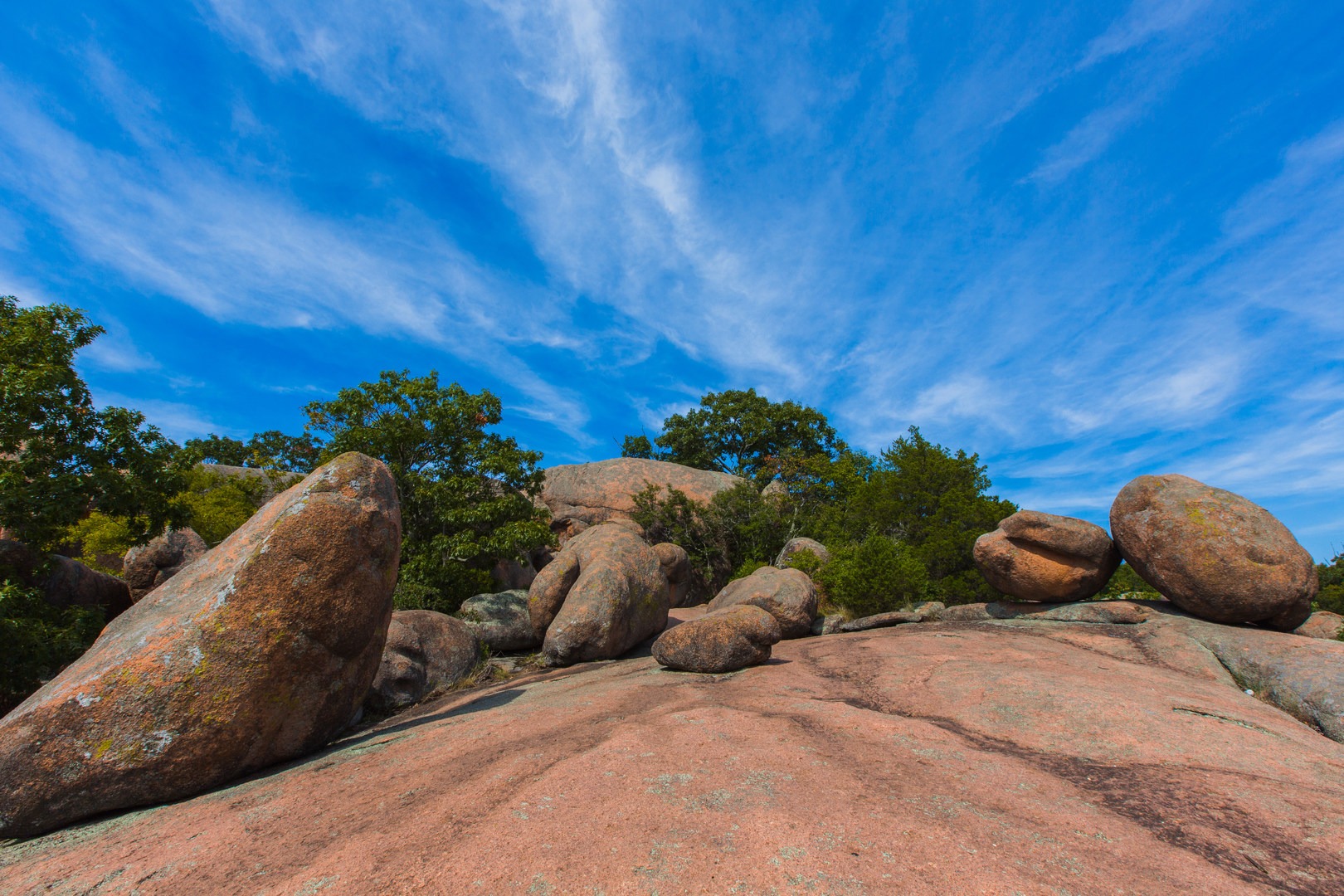You are here
Elephant Rocks State Park is off the beaten path, but once you arrive you will be amazed at what you find. The park received its name from the giant boulders that stand end-to-end like a train of circus elephants. The largest rock in the park is named Dumbo, and it is 27 feet tall, 34 feet long, and 17 feet wide. It weighs in at an enormous 680 tons. No official census of the rock formations has ever been taken, so the actual number of these mammoth-sized rocks is still unknown. The park spans a small 7 acres, and it is filled with enormous and fascinating sights. The park is considered a geological classroom where visitors can see and touch some of the oldest rocks in the south-central U.S. All of the rocks located in this park are red granite. The formation of these beautiful rocks began about 1.5 billion years ago during the Precambrian era. The magma that accumulated below the earth’s surface slowly cooled, forming massive red granite rocks. Water permeated down through the fractures in the rock over time and rounded the edges and corners of the blocks while they were still underground. This formed giant rounded masses called core stones. Erosion eventually brought these beautiful rocks into view above the earth’s surface.
One of the other unique things that separates this park from others is attributed to the work of the Missouri Park System. They spent numerous amounts of time creating educational metal markers throughout the park engraved with braille. If you cannot see the enormous rocks, you can still learn about their history and touch a piece of the past. The oldest recorded commercial granite quarry is also near the park, and it produced fine red granite called “Missouri Red.” It opened in 1869 and produced stone for the Eads River Bridge piers standing on the Mississippi River levee in St. Louis. From 1880 to 1900, millions of paving rocks for the St. Louis levee and downtown streets came from this quarry. Next time you are in downtown St. Louis walking around, look down and see if you are walking on some of these bricks. It will make you think back to the time when they were first created and how far they traveled to their final resting place. Whether you are here to picnic, rock climb or hike, this place won’t let you down. Take some time to enjoy the beauty that surrounds you. You will not be disappointed as you step into the past in this geological heaven.
Logistics + Planning
Current Weather: Powered by Dark Sky






























Comments
Sign In and share them.